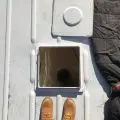Hey! This site is reader-supported and we earn commissions if you purchase products from retailers after clicking on a link from our site.
Connecting your rig into a power or plumbing system while you travel should never be an issue. Most private campgrounds and public facilities have electrical systems that will accommodate RVs that may need a 50-amp connection, a 30-amp supply or a standard 110/120-volt outlet that you would find in a standard home or apartment.
In addition to a power supply, many of these same places have hook-ups for sewer, water, and some will even supply you with cable television and internet services. Rates for these amenities will vary of course, but that is all dependent upon the services you require. For example, you have a satellite TV antenna and don’t need to access their services so your rate may be less than those that would like cable or internet access.
You should also know that many campgrounds offer various services based upon different areas of their facilities. Occasionally, you may pull into a facility that while they have full hook-ups, those sites may be reserved or already occupied. When this happens, you should be prepared to deal with those issues and in this article I’ll share with you some of the items I bring along when I travel to avoid these problems, and I’ll also share some tips for connecting your utilities properly as you travel.
Arriving at your campsite or campground
If you are arriving at a site with an office or check-in point, always stop there and check-in with them even if you are pre-registered, pre-assigned a site, or prepaid. Circumstances may have changed since you booked the site and in some cases those changes may benefit you.
For example, you booked a site online a few months ago that only had a 30-amp electric hook-up, full water, and no sewer available. You did this because it was all that was available at the time you booked the site and you were willing to deal with the inconveniences because being in that location at that time far outweighed the smaller challenges.
That said, when you arrive at your location, sometimes you may be pleasantly surprised when the folks at the check-in point tell you that they’ve had a cancellation or a no-show and they have a site for you with what you wanted in the first place. Sometimes they’ll offer a better site at a discounted price, and sometimes they’ll offer to book you into that site with no additional charge to you.
Connecting your electricity
Connecting the electricity to your RV can sometimes be confusing based upon your RV’s connectivity outlet and that of the hosts connectivity. While you may have a top of the line electrical system based upon 50 amps, perhaps the campground you are staying at may have an electrical power grid based upon 30 amps.
Now what?
Your best option for this scenario is to purchase a set of adapters that will allow you connect to the services offered by your host. In other words, if your RVs electrical system is wired for 50-amps, and the services offered by your campground or host is only 30-amps or less, you’ll need an adapter that will either add or subtract the amperage based upon the hosts system and your electrical system.
Now that you have established your electrical connections, the next step is to level your RV and deploy its slide-outs. Some folks prefer to do this step first when they pull into a site, but I prefer to establish an electrical connection first and that prevents me from unnecessarily draining my onboard batteries. Once I have connected my electricity, leveled my rig and disconnected it from my tow vehicle, I move onto connecting it to the other utilities.
Connecting your water
After I connect my system into a power grid when I’m staying at a conventional campground, my next step is to hook up my water supply. You may remember that in my last article on RV gas mileage, I recommended that you limit your freshwater supply onboard your rig if you’re traveling a short distance between stays. If you have followed this advice, you’ll need to replenish your water supply by hooking your hoses into the hosts freshwater supply and filling your tank.
Connecting your sewage
Frankly, I hate dealing with black or gray water and I always wait until last to hook these components up when I pull into a new site. For the most part, I always try to empty these tanks between sites, and I do this to conserve fuel while I’m traveling between campsites. If I’m fortunate enough to have a continuous connection to a sewage drain, this will be my first step when disconnecting and moving on and we’ll look at that process in a future article.
In the meantime folks, thanks so much for following along on my journeys and I hope to see you on the road someday.
Be sure to check out our favorite campgrounds around the country too!




